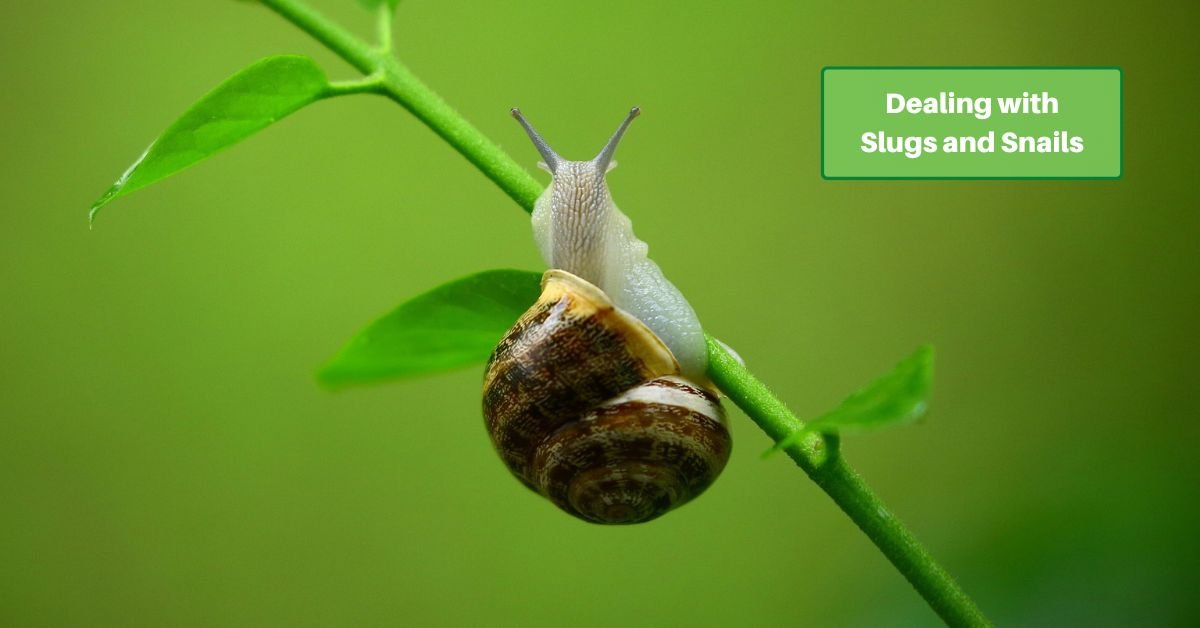Gardeners worldwide share a pair of common adversaries that, despite their slow pace, can wreak havoc on a wide array of plants: the humble slug and snail. These mollusks are often considered pests due to their appetite for leaves, flowers, and vegetables. They can quickly turn a lush garden into their nightly feast.
Understanding how to manage these pests effectively is crucial for maintaining the health and beauty of your garden. This article will arm you with strategies to control slug and snail populations, ensuring your green spaces remain vibrant and thriving.
Understanding Slugs and Snails
Slugs and snails belong to the mollusk family and share similar diets and damaging effects on garden plants. Their life cycle begins with eggs laid in moist soil or under debris, hatching into juveniles that can survive through seasons to become familiar garden pests. These creatures are most active at night or during damp conditions. They slide over plant surfaces to feed, leaving a distinctive mucus trail behind.
The attraction of slugs and snails to gardens is often due to the ideal conditions these environments provide: moisture, shelter, and abundant food sources. They are particularly drawn to young, tender plants and can cause significant damage to seedlings, leaves, and fruiting bodies. Understanding these habits and preferences is the first step in devising an effective management plan.
Preventive Measures
Prevention is critical in managing slugs and snails, and garden hygiene plays a crucial role. Removing debris, such as fallen leaves and plant remnants, eliminates these pests’ potential hiding and breeding spots. Regular weeding also reduces available shelter, making your garden less inviting.
Physical barriers can effectively protect plants. Copper tape or mesh around planters and raised beds creates an uncomfortable surface for slugs and snails, deterring them from crossing. You can also surround susceptible plants with sharp materials like gravel, crushed eggshells, or diatomaceous earth to physically prevent these pests from reaching your plants.
Watering practices can also influence slug and snail activity. Since these pests thrive in moist conditions, watering your garden in the morning allows the soil surface to dry by evening, making it less appealing to slugs and snails.
Natural Predators and Biological Controls
Nature offers its own solutions to slug and snail problems through predators like birds, frogs, toads, and certain insects, which naturally reduce pest populations. Encouraging these predators into your garden can be as simple as providing habitats like birdhouses and ponds or leaving parts of your garden wild to offer shelter.
Biological control methods introduce another layer of defense. Nematodes, microscopic worms that parasitize slugs and snails, can be applied to the soil. These nematodes infect and kill slugs, offering a natural and effective means of reducing their numbers without harm to plants or other wildlife.
Implementing these strategies requires a thoughtful approach. The approach balances preventive measures with the encouragement of natural predators to create an environment less hospitable to slugs and snails. By understanding the habits and preferences of these pests, gardeners can protect their plants and preserve the beauty of their gardens.
Chemical Controls: When and How to Use Them Safely
While cultural, physical, and biological strategies play crucial roles in managing slugs and snails, there are scenarios where chemical controls may become necessary. Slug and snail baits, containing active ingredients like iron phosphate, can be effective and safer for pets and wildlife than more toxic options. When selecting chemical controls, it’s vital to opt for environmentally friendly products that pose minimal risk to non-target organisms.
To use chemical controls safely and effectively:
- Apply sparingly and only in areas where slug and snail activity is high.
- Avoid spreading baits near edible plants to prevent contamination.
- Read and follow label instructions carefully to ensure the safety of yourself, pets, and garden wildlife.
DIY Solutions and Home Remedies
For gardeners interested in less conventional methods or seeking to complement their existing slug and snail management strategies, several DIY solutions can be pretty effective:
- Beer traps: Fill shallow containers with beer and place them around your garden. The yeast attracts slugs and snails, which then drown in the container. Empty and refresh the traps regularly.
- Coffee grounds: Sprinkle used coffee grounds around plants. The caffeine acts as a natural repellent to slugs and snails. However, use this method sparingly, as excessive coffee grounds can affect soil acidity.
Although their effectiveness can vary, these home remedies offer an inexpensive way to tackle slug and snail problems. Experimenting with different solutions and observing what works best in your garden is key.
Managing slugs and snails in the garden requires a multifaceted approach, combining prevention, natural and biological controls, and, when necessary, chemical interventions. By understanding the habits and preferences of these pests, gardeners can implement effective strategies to protect their plants and enjoy a healthy, vibrant garden.
Employing a combination of methods, including encouraging natural predators, creating physical barriers, and using environmentally friendly chemical controls, offers the best chance of success. Additionally, DIY solutions can provide simple, cost-effective ways to deter slugs and snails further.
A garden free of slug and snail damage is a testament to a gardener’s dedication and holistic management practices. With patience, persistence, and a commitment to sustainable gardening, it’s possible to maintain a beautiful, thriving outdoor space that supports a diverse ecosystem.









